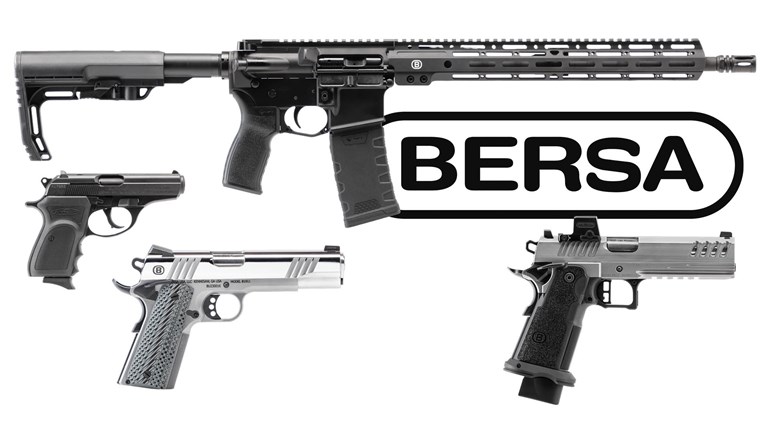
Exotic slides, stylish barrels and elaborately enhanced frames are all available from a variety of manufacturers to make your Glock-based pistol truly “yours.”
The number of firearms that you can assemble yourself from scratch, from the frame/receiver up, without using a single part made by the original manufacturer makes for a pretty small club. And if that club is small, then the exclusive party room in the back is populated by designs where you can buy completely assembled derivatives from third parties. This usually happens when a popular firearm becomes old enough that any patents have expired, although sometimes clone makers do jump the gun and matters get settled in court.
Glock pistols, at least of the first three generations, have been in the first club for a while. Off the top of my head, I can’t recollect when the first turnkey, aftermarket Glock frames became available, but it has to be getting close to 20 years. CCF Race Frames were certainly available in the early Aughties, and (as this is written, anyway) you’ve been able to buy stripped grip frames to get your DIY gun-building kicks for a while now.
…Third Gen Glock architecture is effectively now just a jumping-off point for creative manufacturers.
But these days, Glocks have joined the Colt Government Model and a handful of rifles in that you can buy a turnkey, ready-to-fire, new-in-box gun that is literally part-for-part 100-percent compatible with a factory Glock, yet is not actually made by Glock.
This raises a question that used to arise in heated debates on the internet back in the days of people arguing Glock versus 1911 over dialup modems: When will “Glock,” like “1911,” become just a generic name for a kind of gun?
People call a paper facial tissue a “Kleenex” or a disposable bandage a “Band-Aid” without regard for whether or not it was actually made by Kimberly-Clark or Johnson & Johnson. Similarly, John Moses Browning’s .45 ACP M1911 Government Model gets the bad rap for every malfunction suffered by every subcompact, alloy-framed, 3-inch, 9 mm single- or double-stack, polymer-frame 1911-pattern pistol made by any third-party manufacturer. “What’d you expect?” snort the detractors, “It’s a 1911.”
It will probably be a while before third-generation Glock clones have this sort of effect on internet gun lore, but it’s not impossible to imagine in future debates.
Another result of a firearm making the effective jump to “open source” like this is that it opens the door for experimentation and marketing to niches that might not attract the eye of a larger company. Like the aforementioned variants based on the 1911 architecture that vary greatly in size, caliber, capacity or construction materials from the original, the basic Gen3 Glock architecture is essentially now just a jumping-off point for an increasing number of creative manufacturers.
Alpha Foxtrot has a forged-aluminum frame which offers a host of refined ergonomic details. Zev Technologies offers its OZ-9 which, like a 2011-type racegun, mates a metal receiver/chassis with a swappable polymer grip-frame module.
One of the more radical riffs on the concept is ZRO Delta’s Modulus concept, which is essentially a metal-frame Gen3 Glock G19 clone that is almost entirely plug-and-play. Like Legos, nearly everything about the pistol can be swapped around to tailor it to the needs of the shooter: backstraps, mag wells, different-length dustcovers to match up with different-length slides. The whole kit can be had in a foam-fitted case. It’s quite James Bond.
Building one to your personal tastes has never been easier. A site like Brownells or Lone Wolf Distributors is practically a wish book of wild after- market parts to mate with a frame of your choice. If you don’t want to try your hand at building a your own lower from Polymer 80, but like the way they handle, the company will sell you one already assembled in its PF-series of pistols (following a standard transfer procedure via an FFL). If that’s too vanilla, Faxon uses the P80 frame as the basis for its FX-19 Hellfire.
With this bewildering variety of boutique and custom options, you can get just about any configuration of “Glock” you’d like: Beavertail? Finger grooves? Mag well? Long slide and short grip, or short slide combined with a full-length grip? Someone offers it, and if they don’t, you can likely build it yourself.
There’s something to lament, I suppose, about the good ol’ days when a Glock was a specific model of pistol that came in any color you wanted as long as it was black, came in a plastic tub that looked suspiciously like a Tupperware sandwich box and just plain worked with no tinkering or worrying about recoil-spring weights.
On the other hand, choice is good. Variety is the spice of life. Getting a handgun that is specifically tailored to your hand and your own personal needs is great.
Just ask any custom 1911 owner.




































